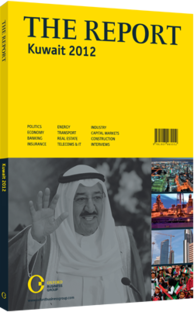Museum hopping: A tour of the cultural attractions in the capital
Although located in a region that includes several ostentatious and glitzy neighbours, Kuwait takes a different approach to attracting visitors. Nestled between Iraq and Saudi Arabia in the north-west corner of the Gulf, the country is turning itself into a regional centre of retail as well as culture.
While Bahrain and Dubai offer the hustle and bustle of big city life, Kuwait offers a more subdued experience, focused on dining out and strolls through modern shopping complexes, marinas and along the corniche. An aquarium and a good selection of museums add to the entertainment options.
ON DISPLAY: The country has invested its wealth in an array of museums from science and technology through to ancient historical art and artefacts. A notable example is the Scientific Centre, located in a sail-shaped building on the corniche. The centre is home to one of the largest aquariums in the Middle East and an IMAX cinema showing a film about the clean-up operation of the oil fields after the Iraqi occupation called “Fires of Kuwait”. It also has a dhow harbour with the sailing boats used by Kuwaiti merchants in the pre-oil era. Among the ships docked here is the Fateh Al Khair, a deep-sea sailing “boom safar” vessel that traded along the India-Africa route.
The Martyr’s Museum in the suburb of Al Qurain offers a striking guide to the country’s recent past. The museum is a memorial to a group of young Kuwaitis who tried to resist arrest during an Iraqi raid in February 1991. The National Memorial Museum in Shuwaikh goes into greater detail of this period.
“It was the best of times and the worst of times,” said Saad Akashah, an adviser to the Arab Fund for Economic and Social Development and a resident in the city under the occupation. “The worst for obvious reasons but the best because previously ordinary people carried out heroic deeds while others did not live up to such high standards.”
TRADING ON HISTORY: Kuwait has a long history as a trading centre. At the time of Alexander the Great’s advance through the region in the 4th century BC, the Greek admiral Nearchus colonised the island of Failaka, derived from the Greek word fylakio, meaning “outpost”, which lies offshore from the capital.
Located near to where the Tigris and Euphrates rivers emptied into the Gulf, the island’s position allowed it to become a trade centre and over the years archaeologists have uncovered a temple to the goddess Artemis as well as Greek statues and coins. This maritime trading past is celebrated at the Al Hashemi Marine Museum where huge scale models of historical and contemporary wooden dhows are on display, including the Al Hashemi II, one of the largest wooden ships in the world.
HERITAGE: The country’s Islamic heritage is celebrated by the National Museum, first opened in 1983 but still under restoration after damage suffered in the Iraqi invasion. It holds the royal Al Sabah collection, which includes Hellenic and Islamic artefacts.
But one of the most impressive buildings in the city is the headquarters of the Arab Fund for Economic and Social Development. It is accessible by appointment only, as unlike other cultural centres in the capital, the Arab Fund is a regional administrative headquarters. The building offers several rooms and architectural details incorporating Islamic art from across the region.
Egyptian-made walnut doors dominate the entrance, and the building features a Moroccan tile water wall, a Tunisian room with ceramic tile panels, a marble fountain in the Damascene room and a carved oak ceiling in the Mamluk room. These surround an atrium filled with fountains, plants and an Egyptian mashrabiya, or wooden lattice screen, standing the full nine-storey height of the building.
Like many Gulf states, Kuwait is well-known for its vast shopping malls and 4x4s, but the capital’s range of well-thought out and interesting museums offer visitors a unique chance to explore the country’s cultural and historical heritage more deeply as well.
You have reached the limit of premium articles you can view for free.
Choose from the options below to purchase print or digital editions of our Reports. You can also purchase a website subscription giving you unlimited access to all of our Reports online for 12 months.
If you have already purchased this Report or have a website subscription, please login to continue.

